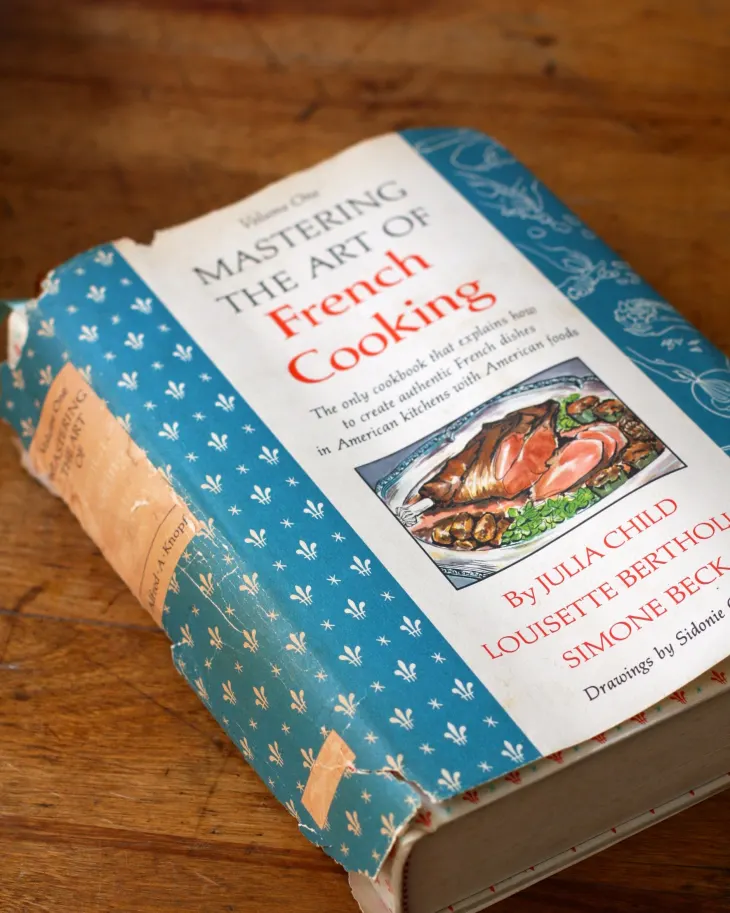
This Forgotten Kitchen Gadget Will Instantly Transport You Back to the ’60s [Nina Ross] by: Nina Ross November 28, 2024
There’s something magical about the sound of a wooden spice rack gently spinning underneath a kitchen cabinet — the quiet creak of wood, the light clink of glass jars brushing against each other. It was a staple in Grandma’s kitchen for many of us who were reared in the ’50s, ’60s and ’70s. You’d be up on tiptoe, rotating it with childish curiosity, gazing at the colorful labels on jars of paprika, cinnamon, oregano. It wasn’t just another practical kitchen tool; it was a bit of culinary theater. The spice rack made the rounds with a hanging carousel of spices.
Smart Design: For a Growing Generation
The swing-arm spice carousel was a symbol of the optimism and creativity of postwar America. There were smaller kitchens, but larger families, so efficient use of space was considered paramount. Cabinets began to house all kinds of smart solutions, from fold-out ironing boards and built-in cutting boards. Of course, there was the rotating spice rack. By being installed beneath the cabinet, it cleared precious counter space. It kept prime spices at arm’s length, which was a modern convenience for the home cooks of the day.
From Lazy Susan to Spice Carousel
Derivative of the lazy Susan — a rotating tray dating back to at least the 18th century — is the spice carousel. Its provenance is uncertain, but by the early years of the 20th century it was a staple of an English dining table, used to pass condiments and dishes. By the middle of the century, its uses extended to the kitchen, where it became the literal hanging spice rack we know today.

A Gateway to Global Flavors
This hanging version likely gained favor during the post-war housing explosion of the 1940s and ’50s. New suburban houses had minuscule but efficient kitchens. Space counted for every inch. The spice carousel became an emblem of this move toward modern convenience, appealing to the frazzled homemaker. She had family dinners and PTA meetings to get to, not to mention another cup of percolated coffee to drink.
The hanging spice carousel was not merely a kitchen gadget. It was a reflection of a cultural place. The ’50s and ’60s were decades of culinary discovery in America. With international travel more readily available, and the popularity of cookbooks such as Julia Child’s “Mastering the Art of French Cooking,” once-exotic spices — such as turmeric; coriander — worked their way into American homes.
These spinning racks allowed for home cooks to dabble with flavors. A quick turn could make a basic meatloaf “gourmet” with herbs de Provence or smoked paprika. The spice carousel became a small portal to the world of flavors, all from the comfort of a suburban kitchen.

More Than Just a Kitchen Tool
For those who recall, the spice carousel evokes more than just the smell of nutmeg or the sight of McCormick tins. It transports us back to a more familiar world: the family sitting down to this table, every night and for every meal. Cooking became an act of love. The image of a matron — apron cinched up tight, hair perfectly coiffed — giving her spice rack a twirl, extracting a jar of allspice to shake over her famous cookies.
A Sweet Comeback in Moderning Kitchens
Now, with vintage kitchens and mid-century design coming back into style, gadgets like the hanging spice carousel are making a return to homes. They’re prized not only for how they work, but also for the memories they stir. In this age of sleek, minimalist kitchens, there’s something homey and welcoming about a rotating wooden rack filled with little colorful jars. It’s a counterintuitive reminder that efficiency does not need to be decharmified.

Next time you bump into one of these fabby gizmos, go on give it a whirl. Let it bring you back to the kind of place where dinner was homemade and spices stored in glass jars. Every meal was an opportunity to come together and share life’s simple pleasures. Small though the spice carousel may be, its impact on our kitchens — and our hearts — could hardly be any bigger.




